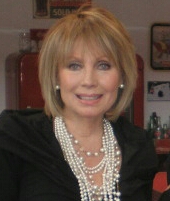The Maybelline Story" written by Sharrie Williams is a historical narrative of Maybelline, one of the most iconic beauty brands in the world. The book explores the brand's humble beginnings and its rise to become one of the most well-known and successful makeup companies in the world.
The book covers the life of the founder, Tom Lyle Williams, and his journey to creating Maybelline, as well as the innovations, challenges, and triumphs the brand went through. Additionally, the book tells the story of how Maybelline became a trailblazer for the beauty industry and its impact on the society and culture.
In the 1920s, the cosmetic industry experienced significant growth as women's fashion and social norms were changing. The 1920s were known as the "Roaring Twenties" and were a time of great social and cultural change, particularly for women. During this decade, women began to wear shorter skirts, bob their hair, and apply makeup to their faces as a way of expressing their newfound freedom and individuality.
Maybelline was founded by my great uncle, Tom Lyle Williams in 1915. The brand originally sold a mascara product called "Maybelline Cake Mascara," which was a combination of petroleum jelly and coal dust. The mascara was applied with a brush, and Tom Lyle, named the product after his sister Mabel. Maybelline was one of the first companies to market makeup specifically to women, and it advertised its products as a way for women to enhance their natural beauty.
In the 1930s, Tom Lyle continued to expand the company's product line and increase its visibility. He added new items and advertised heavily in magazines. The company continued to be one of the first companies that marketed makeup specifically to women.
Maybelline was a successful brand in the 1930s, thanks to its innovative marketing techniques, and the continued popularity of its mascaras and other makeup products.
In the 1940s, Maybelline continued to grow in popularity as a makeup brand, thanks in part to its innovative marketing strategies. Tom Lyle continued to advertise heavily in magazines, and also expanded the company's product line.
During World War II, many consumer goods were hard to come by, and this affected Maybelline as well. Tom Lyle had to get creative with his supply chain and he did so by rationing and repackaging the available products.
During this time the company was also affected by the war effort, some of their staff went to fight in the war, this affected the productivity and the ability to advertise and market the products as heavily as before. Despite these difficulties, Maybelline managed to maintain its position as a popular makeup brand.
After the war, with the economy recovering and a return to normalcy, Maybelline resumed its growth and by the end of the 1940s, it was one of the leading makeup brands in the United States.
In the 1950s, Maybelline continued to be a popular and successful makeup brand as Tom Lyle, continued to expand its product offerings and improve its advertising and marketing strategies. The company added more shades and options to the existing products and by the late 50s he began to target specific audiences like African American customers.
Maybelline also began to invest more in television advertising, as the medium gained popularity in the 1950s. The company sponsored TV shows and created commercials that featured models and actresses wearing Maybelline products. This helped to increase the brand's visibility and reach a wider audience.
Overall, the 1950s were a period of continued growth and success for Maybelline, thanks to its effective advertising and marketing strategies, and its expanding product line.
In 1968, Tom Lyle, sold Maybelline to Plough Inc. and was no longer actively involved in its operations.
Plough Inc. continued to advertise heavily on television and invest in new product developments. The company came out with new mascara, eyeliner, and lipsticks, as well as new shades of eyeshadows and other items, in order to keep up with changing fashion and beauty trends.
The company also continued to expand internationally in the 1970s. Maybelline products were exported to even more countries, which helped to increase the brand's visibility and reach a wider audience.
Maybelline had also grown into a big corporation by then and was purchased by a large pharmaceutical company called Schering-Plough. This gave the company a deeper financial pockets and resources to invest in further growth and expansion.
Overall, the 1970s were a period of continued growth and success for Maybelline, as the brand continued to be one of the most popular and well-known makeup brands in the world, despite the founder, Tom Lyle Williams stepping down and no longer being involved in the company
1980s, Tom Lyle Williams, the founder of Maybelline, had passed away and was no longer involved with the company. By that time Maybelline had been a publicly traded company and was owned by different corporation and was operated by a new management team.
Throughout the decade, Maybelline continued to be a popular and successful brand. The company continued to advertise heavily on television and invested in new product developments. The company came out with new mascaras, eyeliners, lipsticks, as well as new shades of eye shadows and other items, in order to keep up with changing fashion and beauty trends.
In the 1980s, Maybelline also expanded its product line to include a wider range of makeup products, including foundation, concealer, and powder, which helped the company appeal to an even wider range of customers.
The Maybelline Story expands on the personal stories of the people behind the Maybelline Brand. It reads like a Novel, but, alas is an exciting true Story.


.jpg)




































